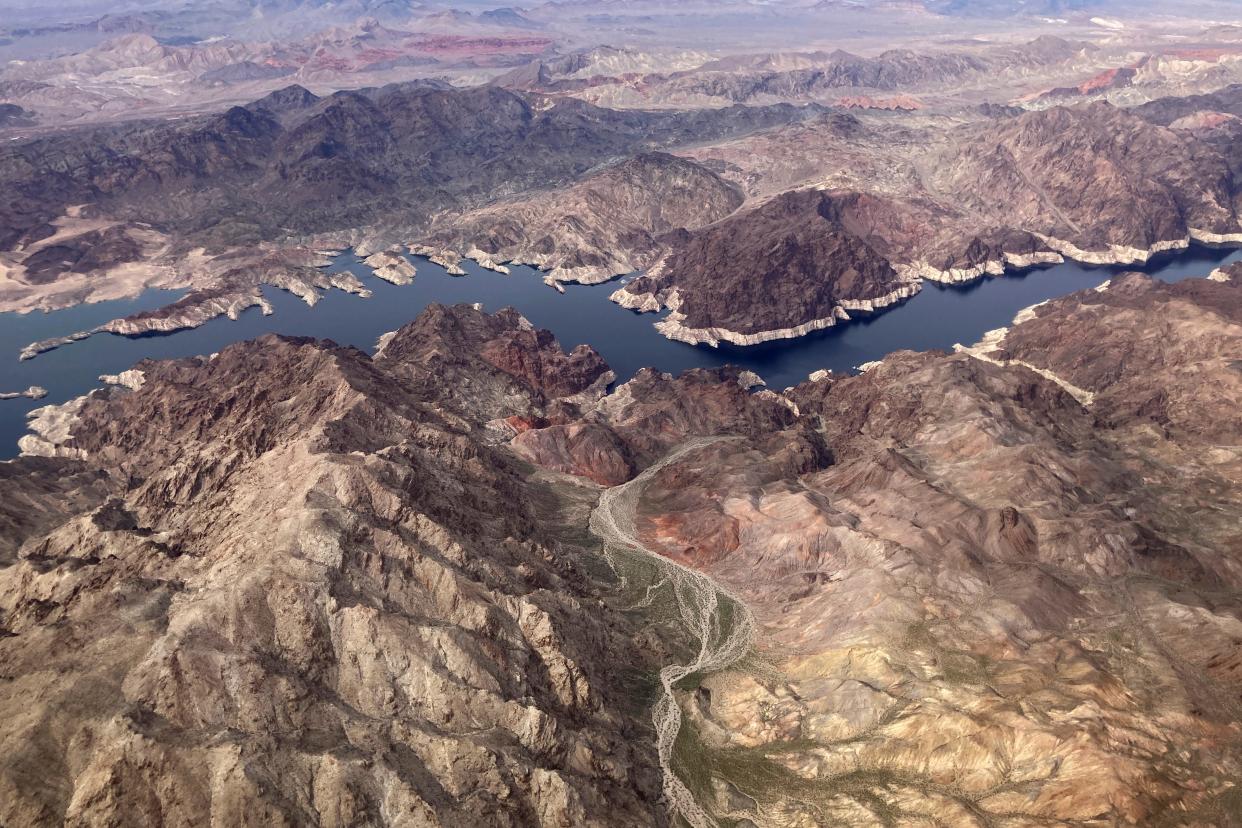Lake Mead could get a lot more Colorado River water. What changed so quickly?

What a difference a month makes.
The March 24-month forecast, which predicts reservoir levels along the Colorado River for the next two years, had Lake Mead on a steady trajectory downward.
The lake was projected by next year to fall into a Tier 2B shortage – one that, for the first time, would require California to begin participating in mandatory cuts.
And it would plummet into a Tier 3 shortage – requiring the deepest cuts to which we’ve currently agreed – the following year.
But now April’s here, and everything’s different.
How much better are we talking?
This month’s forecast now suggests that Lake Mead could start next water year in a Tier 1 shortage, requiring far less water from Arizona than we are now mandated to give.
Instead of a steady march toward 1,000 feet of elevation, which was the case last month, Lake Mead is now projected to rise to a high point of about 1,070 feet by early next year.
That would still be shy of removing us completely from shortage actions, but only by about 5 feet.
It’s almost night and day from where we were.
Consider that only a few months ago, the federal Bureau of Reclamation was considering the impact of a record low 5 to 6 million acre-feet release from Lake Powell to Lake Mead.
And even last month, the presumption was to release 7 million acre-feet from Powell to Mead this year, which is why Mead was on a trajectory to nowhere good.
What changed so quickly?
Now, Reclamation is projecting up to a 9.5 million acre-feet release this year from Powell to Mead.
That would include the 480,000 acre-feet of water Reclamation withheld in Powell last year to prop up the lake but pretended was still in Mead.
Which erases that confusing accounting measure.
And it would leave another 500,000-plus acre-feet in the reservoirs upstream from Lake Powell, building back water levels there that had been previously raided to prop up Powell.
So, what changed in a month?
The runoff projections.
The amount of water flowing into Lake Powell is now expected to be 177% of average, up from 125% in March. That translates to about 3 million acre-feet of additional water.
So, Lake Mead is saved, right?
This is great news, obviously, if it holds.
But it’s also a doubled-edged sword.
With this rosy of a forecast, the pressure will be immense to ease up on plans to make hefty cuts to existing water use.
Even if officials have said over and over (and over again) that one good water year is not enough to erase problems on Lake Powell and Lake Mead.
Because we still use far more water than the river produces.
And even if there is water now, it will get dry again.
If we don’t find a way to cut what we use – permanently and significantly – we’re going to burn through this gift faster than snowflakes in summer.
What are the key questions now?
The threat of falling into a deeper shortage tier next year is diminishing.
And there are billions of federal dollars on the table to pay users for leaving extra water in Lake Mead.
That raises some key questions:
Can we volunteer enough water now to stave off the most painful cuts that Reclamation could mandate when Lake Mead plummets to dangerously low levels?
And if so, will that savings be enough to carry us through 2026, when the current operating rules for Lake Mead and Lake Powell expire?
And if so, will we still have the resolve to make the tough, painful choices to permanently cut our water use, so it matches what the Colorado River produces?
Or will we just use this time to kick the can (again)?
In some ways, the task before us just got harder now that more water is flowing in.
Reach Allhands at joanna.allhands@arizonarepublic.com. On Twitter: @joannaallhands.
If you love this content (or love to hate it – hey, I won't judge), why not subscribe to get more?
This article originally appeared on Arizona Republic: Lake Mead could get a lot more Colorado River water. What changed?

